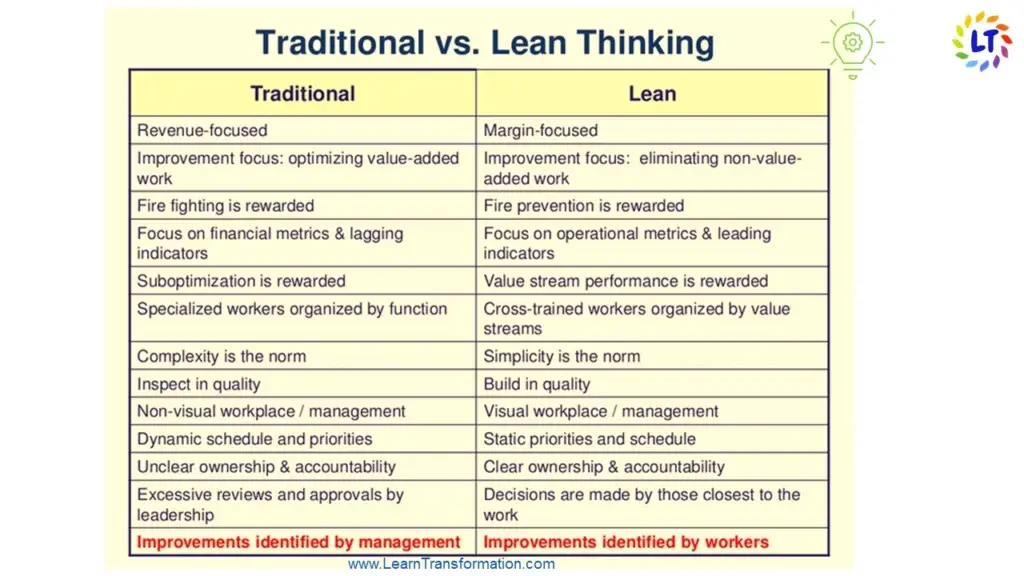The traditional method vs. Lean method of entrepreneurship
Here in this section we outline the core differences between conventional entrepreneurial approaches and the Lean method.
Three Key Differences:
The Lean method differentiates itself from the traditional method in three main areas:
-
Business Plan Formulation:
- Traditional: Business plans have long been central to business school curricula, with research supporting their utility in improving performance and fostering growth. They help clarify thoughts and serve as communication devices. However, critics like Steve Blank argue that business plans often fail upon first contact with customers, and many successful companies like Apple and Amazon didn't start with formal business plans.
- Lean: The Lean method acknowledges the value of planning but questions the prudence of spending extensive time on elaborate plans in uncertain environments where they might quickly become obsolete. Instead, it introduces the Lean Canvas, a tool to create a crisp and dynamic business plan quickly, capturing the essence of the business without lengthy development. The goal is to retain the benefits of planning (clarity, communication) while reducing the time investment.
-
Process Adopted:
- Traditional: This method follows a linear "analyze, plan, act" approach. It works well in stable, predictable environments, such as for established companies launching new versions of existing products, where historical data can inform planning.
- Lean: The Lean method advocates an adaptive and iterative process. It involves rapid testing and learning, experimenting, gathering feedback, and quickly deciding on a future course of action. This often includes building a Minimum Viable Product (MVP), measuring customer responses, learning from the data, and then deciding to persevere, pivot (make course corrections), or perish (close down). The emphasis is on rapid iterations to quickly determine venture viability in uncertain environments.
-
Focus:
- Traditional: The traditional approach, especially for entrepreneurs with engineering backgrounds, tends to be product-centric. It focuses heavily on product vision, development, features, and technology. The conventional product development process involves concept, development, testing, bug fixing, and launching. Customer feedback is often assumed or integrated later in stable organizational contexts.
-
Lean: The Lean method shifts the focus from solely the product to the customer. It recognizes that customers pay for satisfactory solutions to their problems, not just the product itself. Therefore, the Lean method introduces a customer development process to run in tandem with product development. This process involves:
- Customer Discovery: Identifying and validating who the actual customer is.
- Customer Validation: Confirming if customers find the product valuable and are willing to pay for it.
- Customer Creation: Expanding the market and acquiring more customers.
- Company Building: Scaling the business. The initial emphasis is on customer discovery and validation, even if the product is a basic or underdeveloped version, as long as it meets customer needs. This focus on real customer feedback, rather than internal assumptions or market research alone, is a critical distinction.
In summary, the Lean method proposes a different approach to entrepreneurship by offering crisp and dynamic plans, adopting an adaptive and iterative process, and maintaining a razor-sharp focus on the customer rather than being solely product-centric.

